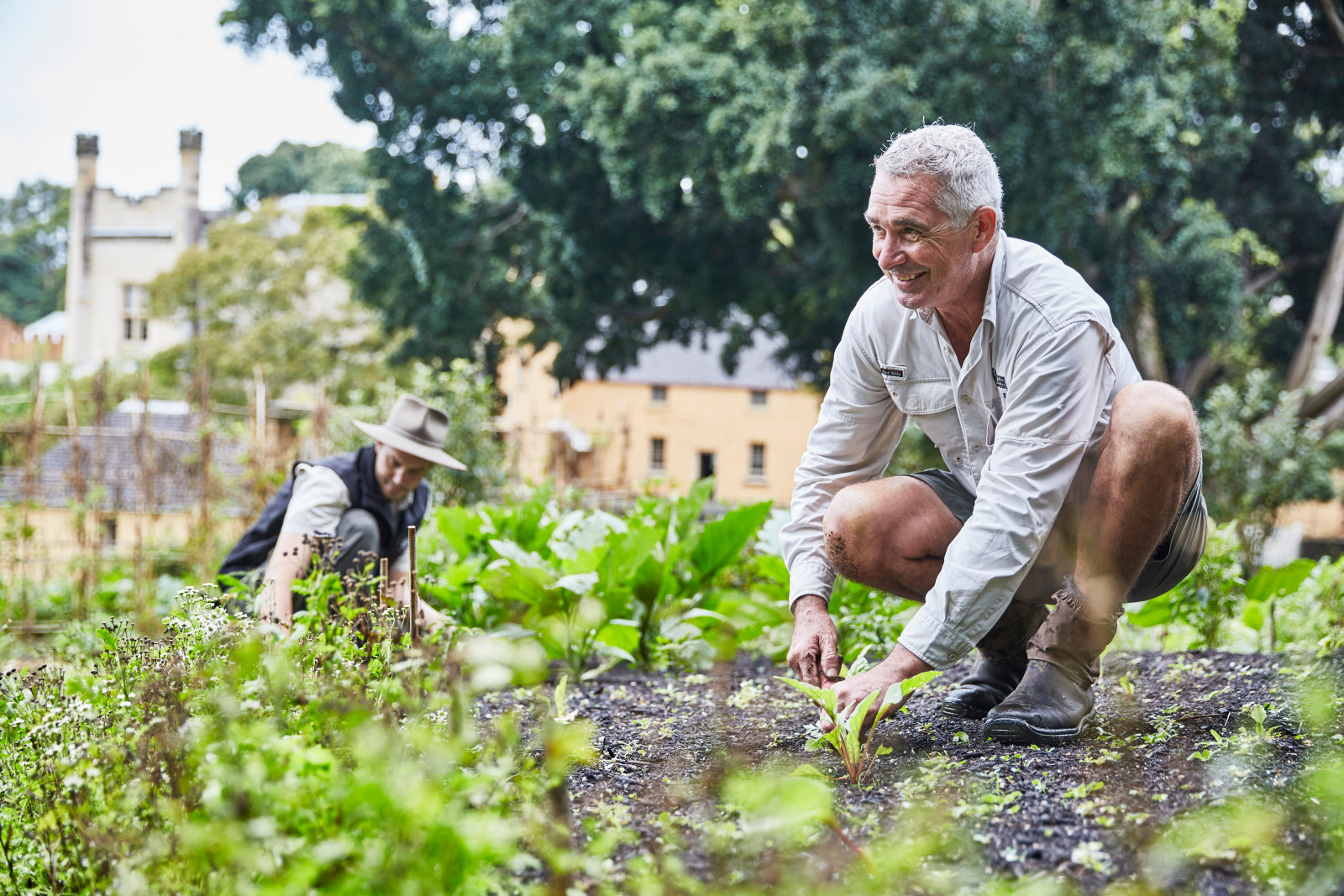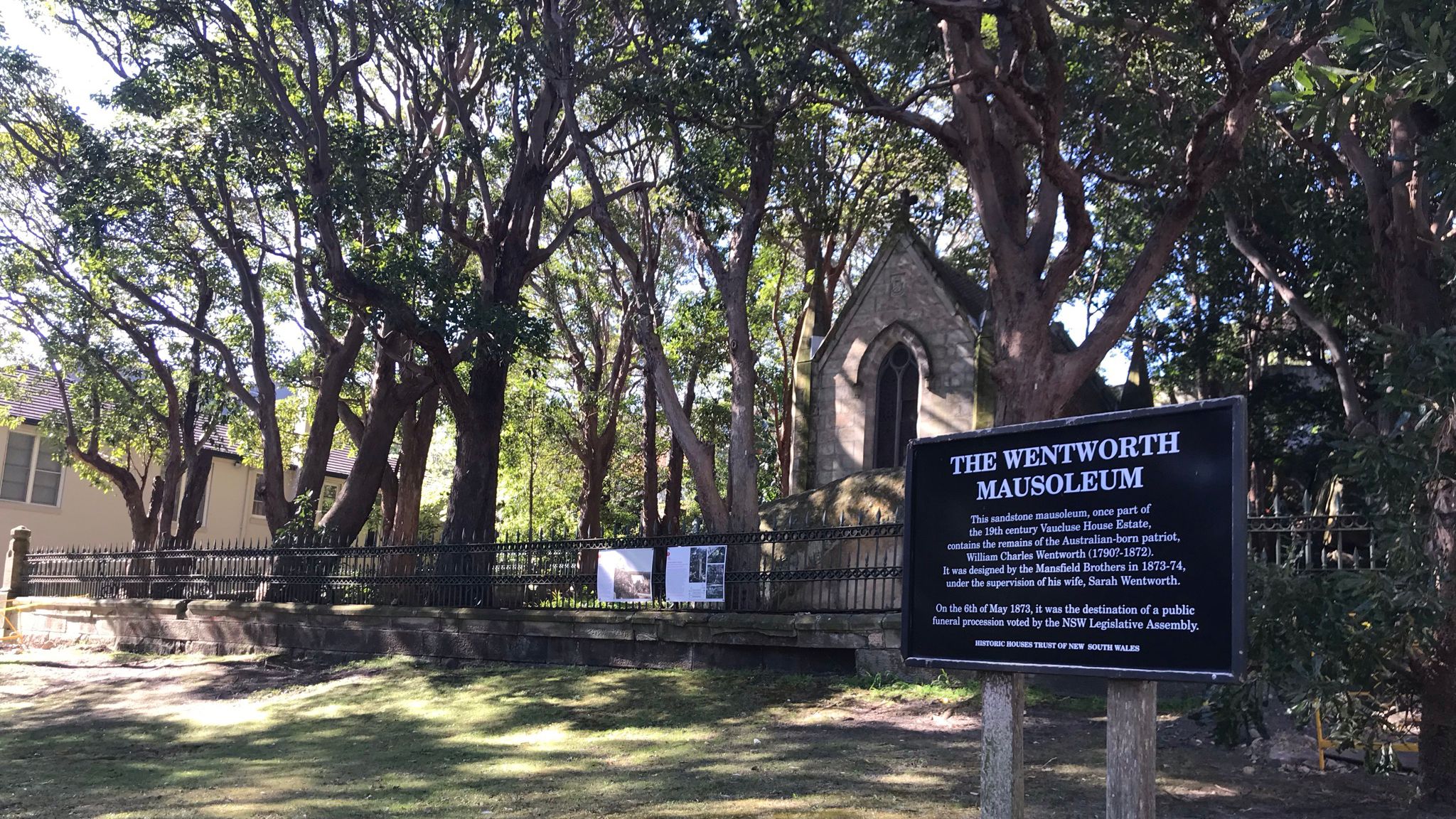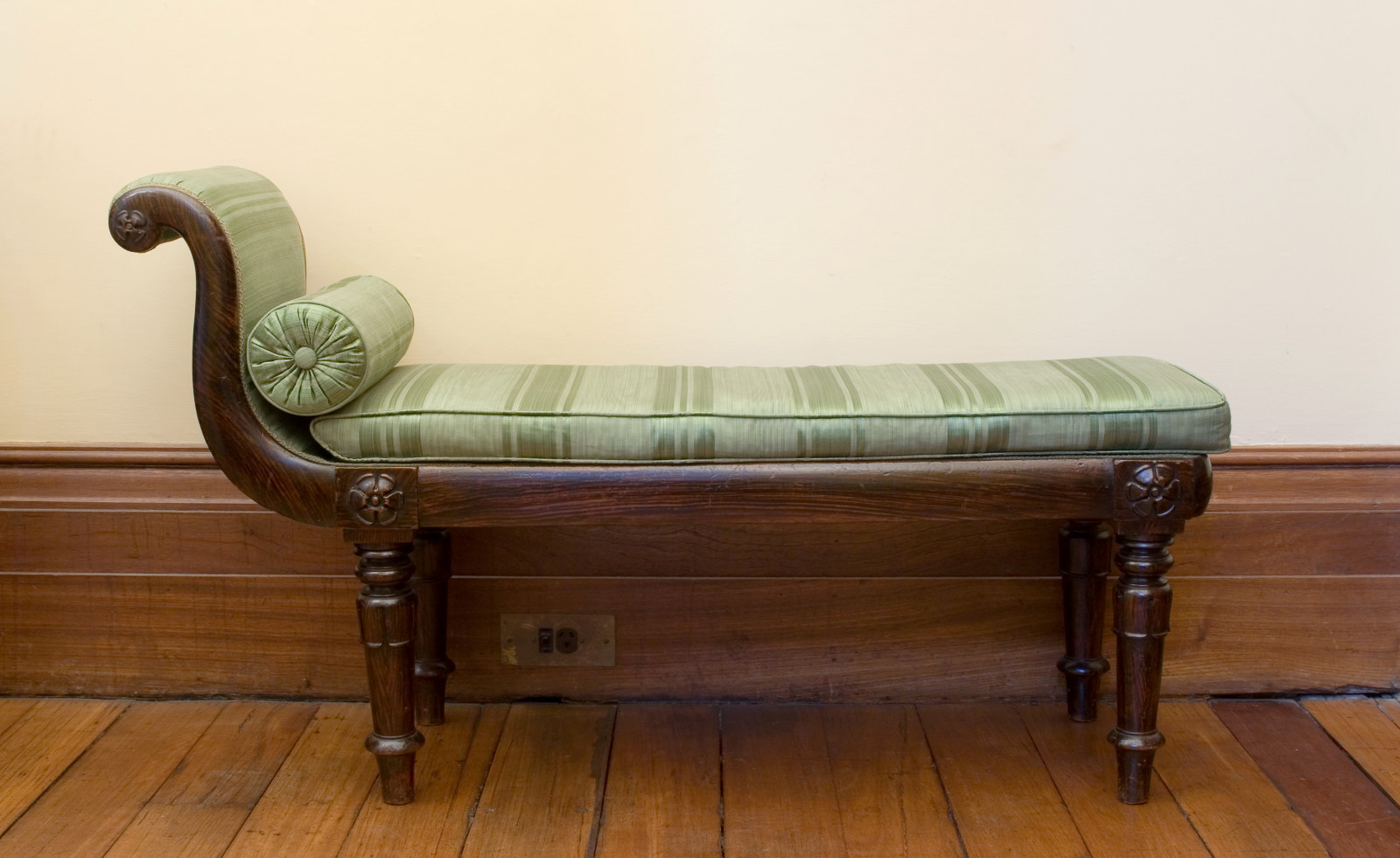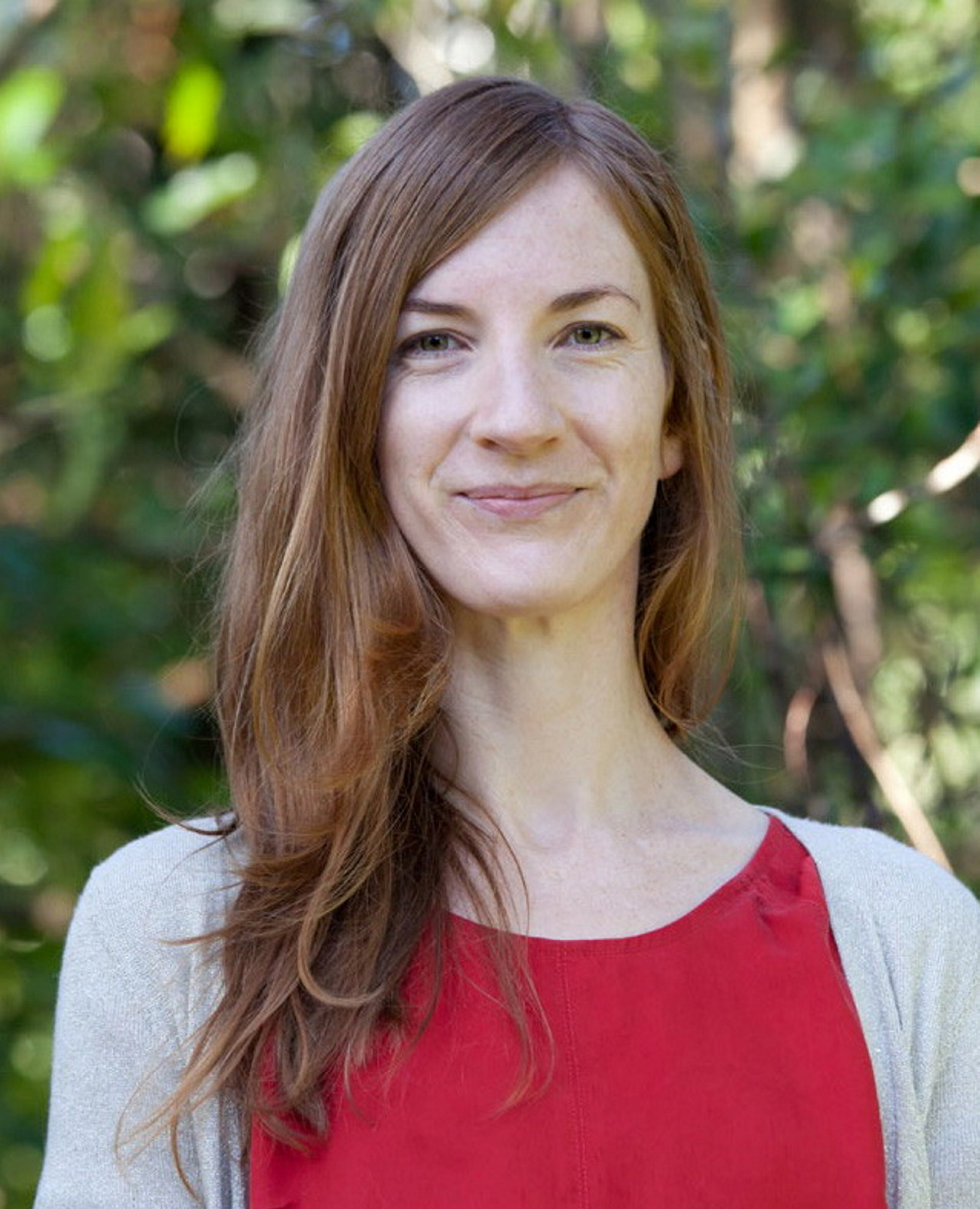The wisteria at Vaucluse House
The exquisitely perfumed hanging purple blossoms of the wisteria have been associated with Vaucluse House for over a century. In the 1920s and 1930s, the magnificent vine became famous as one of the finest springtime displays in Sydney.
The original vine was planted during the later years of the Wentworth family’s occupation of the house, some time after the verandah was added in 1861. It appears in a photograph from the early 1870s, and by 1880 completely shrouded the verandah.
The pilgrimage to one of the Meccas of Australia ends in a maze of loveliness at Vaucluse House, the old home of William Charles Wentworth … Myriads of pendant blossoms frame porches and verandahs; silvery mauve is the garment of the old stone building, with just a hint of purple at the tip of each lovely raceme.
Sydney Morning Herald, 27 September 1934
Patriotism coloured purple
At this time, Vaucluse House was closely tied to an emerging sense of national identity personified in the figure of William Charles Wentworth, the ‘Father of the Constitution’. Visiting the Wentworths’ pleasure grounds to take in the wisteria and spring flowers became something of a pilgrimage – ‘a lodestone to all good Australians’ (Freedman’s Journal, 27 September 1923).
As soon as the first blooms appeared, Sydney newspapers competed with each other to capture the glory of the ‘heliotrope mantle’ – a true battle of purple prose. Wisteria decorated souvenir plates and handcoloured postcards; it was splashed in bright photomechanically produced colours across the front of a souvenir booklet. Indeed, in 1930 the Sydney Morning Herald lamented that ‘even Wentworth House has become more a matter of wisteria than history to the majority of us’.
A charming idea is that of the Vaucluse branch of the Red Cross, whose members have arranged to sell tea each day under the Wisteria at Vaucluse Park … — a veritable ‘bit of Japan’ set in a dear Old World garden.
Sydney Morning Herald, 20 September 1918
Brass bands & wisteria teas
During wisteria season, brass bands and entertainment helped created a carnival atmosphere for the festive crowds. In 1918, the Red Cross offered visitors tea on the verandah, and it became a fashionable diversion to spend an afternoon under the ‘sweet-scented purple mantle’. A few years later, in response to demand, the wives of the estate’s trustees set up a tea tent under the big fig tree, with proceeds going to the Wentworth Restoration Fund.
The annual festivities became so popular that sightseers were advised to travel on weekdays where possible. And though extra trams, buses and ferries were put on to move crowds from Circular Quay to the Wentworths’ harbourside estate, the weekend crowds nearly overwhelmed public transport. In 1935, 5000 visited the ground in a single weekend.
The famous wisteria vine succumbed to borer in the 1960s, and its replacement has never reached the same staggering proportions as its predecessor. But every September, wisteria blooms along the verandah’s ironwork and drops its petals on the stone flags – a sure sign that spring is here.
Well, September and ‘Wistaria week’ will come again, and once more we will make a pilgrimage to the lovely spot and for one afternoon, at least, live in fairyland.
Muswellbrook Chronicle, 17 October 1922
Published on
Related

The coolest room in the house
What practical techniques can we learn from historical building design to minimise heat and energy consumption in our homes today?

Conservation
Vaucluse House kitchen garden
The Vaucluse House kitchen garden recently underwent a significant rejuvenation project to preserve the site and allow it to continue to be used as a valuable educational resource

Wentworth Mausoleum perimeter fence conservation
MHNSW is undertaking the first comprehensive conservation works to the fence surrounding the 1870s resting place of William Charles Wentworth

Designed with intent: colonial vs modernist chairs
This selection of furniture juxtaposes the old with the new: early 19th-century colonial seating and modernist styles made over a hundred years later
